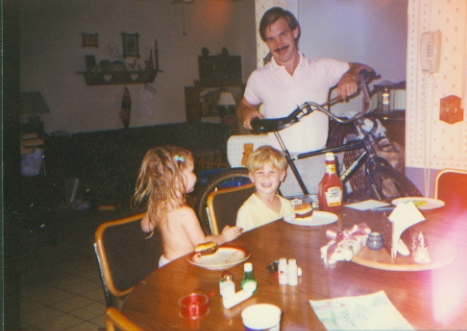 I started AIM begrudgingly almost, having just experienced a messy departure from another ministry. God and I were barely on speaking terms and life on the home front was extremely difficult. Karen was pregnant with our fifth
I started AIM begrudgingly almost, having just experienced a messy departure from another ministry. God and I were barely on speaking terms and life on the home front was extremely difficult. Karen was pregnant with our fifthchild. We had no insurance and nobody to pay me a salary. I wasn’t at all sure that I was cut out for a life of ministry. Yes, I knew God had called me, but I was discouraged, bordering on depressed and I had no overarching vision for what AIM should even do.
The first AIM project was to an orphanage in Montego Bay, Jamaica. In 1990 I led five projects. Several of them were for disaster relief in the wake of Hurricane Hugo. I knew short-term projects changed lives because my life had been changed by two projects I’d gone on as a high school student. But I had no clue about how to minister. My prayers were rote affairs that I engaged in with a heavy sense of discipline.
A project I led to Mexico with 60 of Mark Oestreicher’s junior high students made a big impact on me. While we had planned to build homes for the poor and do VBS, I had never seen junior high students go door-to-door and share their faith. What I saw amazed me. Those students led over 200 people to Christ in a week’s time.
Faith adventures in Mexico
The following summer, we took 750 people on projects and most of them engaged in evangelistic ministry. Though I had three new staff, it was a wild summer. 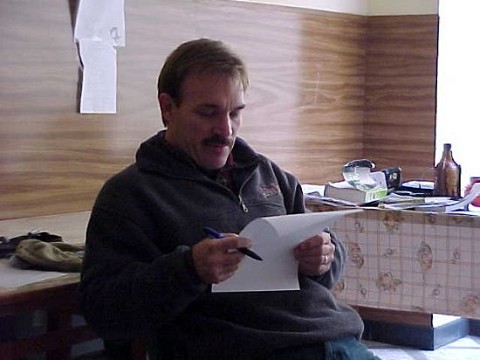 Leading four projects back to back in Mexico was a crazy thing to do. Each week found me more exhausted and more dependent on God’s grace. One week I couldn’t find the groups’ itineraries. So I frantically prayed, “God, get me to the airport when they arrive.” And each time I’d sense it was time to drive by the airport, I’d pull the van up just as the group got off the plane in McAllen.
Leading four projects back to back in Mexico was a crazy thing to do. Each week found me more exhausted and more dependent on God’s grace. One week I couldn’t find the groups’ itineraries. So I frantically prayed, “God, get me to the airport when they arrive.” And each time I’d sense it was time to drive by the airport, I’d pull the van up just as the group got off the plane in McAllen.
In those days, if God didn’t show up, I was dead meat. On the day before the first project started, when the truck didn’t come to pick up the wood that we needed to build houses on the project, it forced me to take desperate measures. I went and rented a 24-foot Ryder truck, loaded it with wood on the U.S. side and began driving the truck toward the border crossing without any paperwork. I just had time to call my mom and tell her, “Mom, you’ve got to pray; I don’t have plan B. If I don’t get across, the project fails.”
When I got to the border, the guard waved the truck through as though it were a normal thing.
By the end of a solid month of projects, I was a crispy critter. And that’s how those early years were; I was driven and didn’t know how to slow down. We moved out of our garage and into a strip mall. By then, Lisa Finney, Sue Mast, Ron Campbell, and Bob Waag were with me.
Discovering listening prayer
At a retreat with Peter Lord later that year, God showed me that there were greater possibilities and depths in prayer than I’d ever imagined. I began to understand that it’s possible to hear the Lord’s voice, that prayer can be a two-way street rather than a boring monologue.
This newfound understanding about prayer began to filter through to our projects. I wanted other people to experience what the Lord had shown me. What a thrill it was to hear Him say He loved me. Everyone needed to have an encounter like that! .
In ’92 and ’93, I began to really wrestle with the downside of short-term missions: unless there was follow-up, they were destined to be mountaintop experiences that didn’t last. This was a double-edged problem. American young people couldn’t sustain the high of their trip back home, and the new converts on the field were being left like orphans without anybody to care for them.
 We started the intern program in order to address these problems. Though I knew next to nothing about how to disciple, the inherent flaw in a short-term mission experience forced us to begin to grapple with it.
We started the intern program in order to address these problems. Though I knew next to nothing about how to disciple, the inherent flaw in a short-term mission experience forced us to begin to grapple with it.
Simultaneously, I realized that we needed a base in Mexico to facilitate our trips and train Mexicans to reach their own countrymen. This sent us on a year-long search (recounted elsewhere) for property that resulted in the establishment of the Gateway in 1994, and then a little later, our Mexican Institute. It was a busy year that also saw us move our base of operations to Gainesville, Georgia.
Several years later, Jocelyn Woosely, a young lady who helped at the Gateway, was killed in a car accident in Mexico. The staff retreat that year was painful as we mourned her passing. God showed me that He brands those He loves. I remember standing up in front of the staff and trying to express this to them – it was tough on us all.
As my children began to grow up, I
became consumed by the urgency of the task of discipling them. This
began to bring focus to what God has shown me. People like Scott Borg
had similar experiences and helped shape the vision. Since the early days, we taught listening prayer., but in the last ten years AIM’s discipleship programs have become the biggest part of our overall ministry. While we started out as a short-term ministry high school students, we’ve become more and more focused on discipling college students and twenty-somethings.
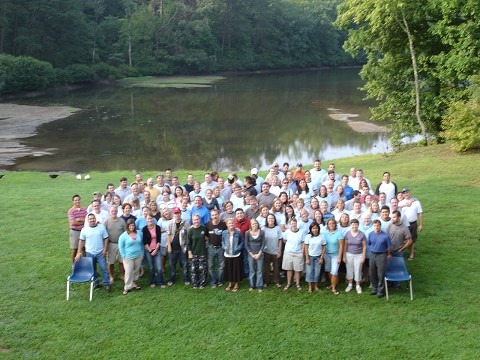 Making disciples through missions
Making disciples through missionsOver time, God has modified the vision. Our focus has crystallized around using missions as a discipleship tool. We’ve seen that the web is an efficient way to share opportunities with others. We’ve seen that the longer and more intensively we can disciple young people, the better the long-term fruit.
Young people are crying out for someone to invest in them and care about them. There’s a lost generation that wants to be shown how to count for Jesus. The revelation about how to reach out to them may be progressive, but the target remains the same.
The AIM board and I have for years sought a few leaders who could come alongside me and take the administrative burden off so that I could focus more on growing the ministry. Recently a number of new leaders have risen up (Clint Bokelman, Jerry Goode, and Michael Hindes taking big pieces of the ministry) , positioning AIM for even greater impact.
In the last three years, we started a number of new ministries like the World Race and our orphan ministries. In each case God asked us to do something that seemed impossible and beyond our resources. And at various times I’ve felt ready to give up. But God loves faith, and as we hung in there and believed, these ministries have grown rapidly and made a big impact in places like Swaziland and Thailand. God’s showing us new ways to reach our world. And we’re discovering that there’s a generation of young people who deserve a higher calling than the risk-averse life of compromise that the church has given them.
That’s what my wife, Karen, and I have sought for our kids. Estie lived in the slums of Nairobi and Matamoros for a year. Emily ministered in drama and dance in South Africa for a year. Our old two children were among the first to go on the World Race. And our youngest, Leah, has ministered with us around the world.
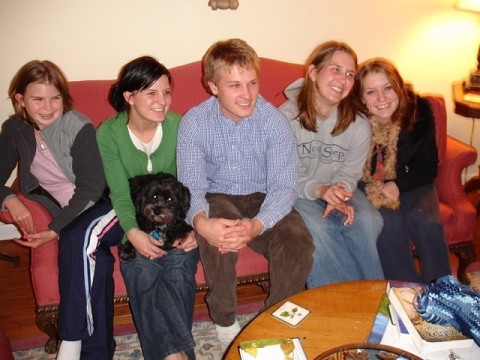 Our five children are representative of the generation that AIM has targeted. They are eager to make a difference, but have needed to be discipled and shown how to do so.
Our five children are representative of the generation that AIM has targeted. They are eager to make a difference, but have needed to be discipled and shown how to do so. 
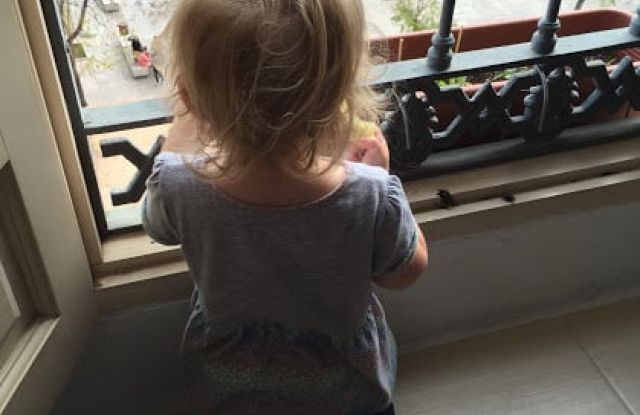
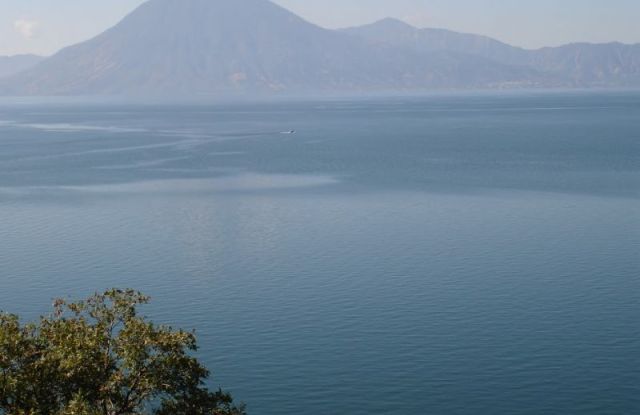

This makes interesting reading, Seth. It’s a story that gives me hope. That God took such time over you and used you way before you had half the stuff figured out that you do now. What a great Dad He is – slowly but surely teaching, training, giving vision and I suspect enjoying the process of it all as much as the results. Encouraging stuff, thanks.
Thanks for always being so open to sharing.. in your sharing others are blessed and I definetly needed to read this today. continued blessing for you and your ministry.
i could probably respond much more eloquently…but my first thoughts convey the truth & impact of even just the first paragraph of this blog: “holy crap – god, i hear you. it’s going to be ok.” he is a good & faithful god, and even amid the uncertainty and murkiness of what we see, he continues to walk with us and bring clarity just in time. it’d odd that in the “meantime” between what you know is coming and when you get there you can be so uncertain yet so at peace with the process.
as one who’s benefited from your tentative yet bold and faithful first steps…thank you. this blog spoke to my spirit and gives me renewed patience as i fall forward. and, might i add – that is the most adorable pic of seth with you & talia! i literally laughed out loud (and loudly!) when i saw his little face & that big grin. you can almost see the little ‘stache on his upper lip. haha
Wow! AIM is such a testimony to God’s faithfulness and goodness! Thanks so much for sharing how God, in His grace has directed your steps and blessed over the years. What wonderful pictures of your sweet family! Seth, thanks for blessing us with your transparency, and also giving us a strong Jesus-like example of discipling and building into your own kids. Since Andy nor I grew up in Christian homes, we are always very grateful for all the Chritian influences that God has placed in our lives. So thanks for being a great model to us and allowing God to use you in our lives. You individually have made a difference in the lives of thousands and thousands and we personally have also been very impacted by AIM and many of the World Racers. Continued blessings and prayers sent to you Seth, your family, and AIM!
I think this is my favorite blog, Seth. Thank you so much for sharng all of this. It’s affirming to know that you didn’t just appear as the Seth Barnes. As God works in your life, He also works directly (and through you) in mine. Awesome.
The Art of Listening Prayer book we received at the BreakThru Conference has been a true gift. God speaks! You gave us a tool and a framework to hear.
Pat
Seth,
I am so proud of you and it’s amazing to see how God has taken AIM in so many different directions, etc. I am so amazed to see what God has done through AIM in the past years. When I was part of AIM about 16 yrs. ago I would never had imagined that God was going to “take” this ministry to this level… Keep up the good work and know that I am personally very proud of you.
Hi Seth,
I have known you through all this history and even before.
God is very fond of you friend.
So am I.
Its great to hear the story,inspiring.
Xristos Sotir.
Yanni Iliadis
thanks for sharing. it’s always good to hear the stories of fathers that have gone before us. my life is forever changed because you did not give up. thank you for always pursuing more of Him.
So reading this I wonder- did you hear Peter Lord in WPB? Cause I was there at that time of your life, and my church hosted him. I was part of the ‘pre-Peter’ meetings to prepare ourselves to minister His Spirit and healing. It was pretty radical for that somewhat conservative church. I think him being a Baptist fooled them. Loved it.
Anyway, Peter’s messages got in me. Can’t say I’ve ever been the same. The concept of not just reading the menu- but actually going the next step so you can taste and see that He is good- never forgot it. And of course the reminder that ‘the main thing is to keep the main thing the main thing.’
Had a ‘pass the time of day’ conversation with your son one afternoon while we were stuck in PAP traffic- recounting how my early years intersected your early years, and what I saw in how you handled the ‘suffering’ is why I would partner with your ministry still to this day.
You talk about the last few years bringing a new ministry with orphan ministries. Can you email me more? I know about Swaziland, and I know what we were trying to do in Haiti- but can you let me know if there is more. David and I are praying about our next long-term commitment, and for me, we know it will involve orphans. We have some things on the table, but if you guys are dreaming bigger there too- I’d love to hear about it.